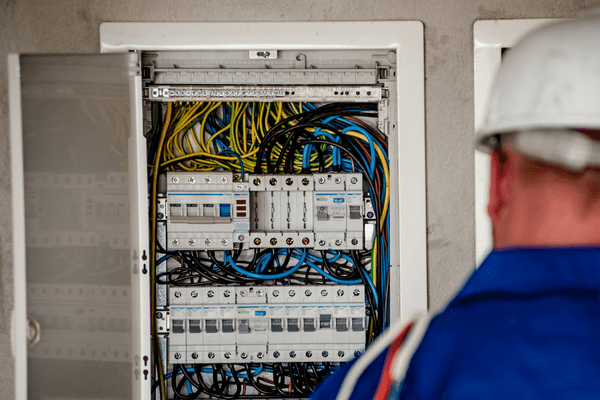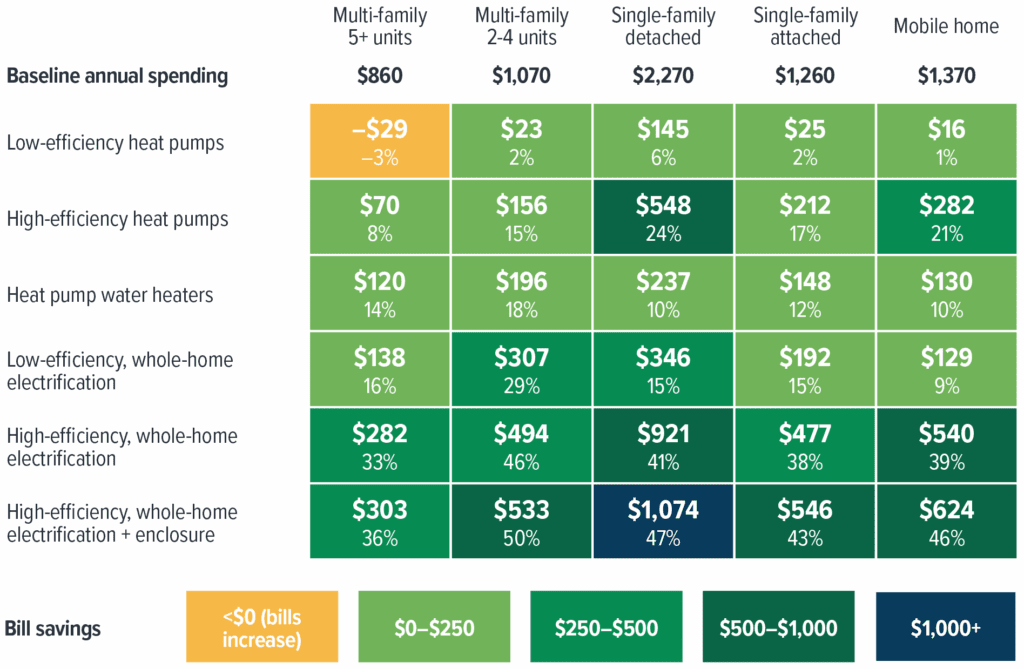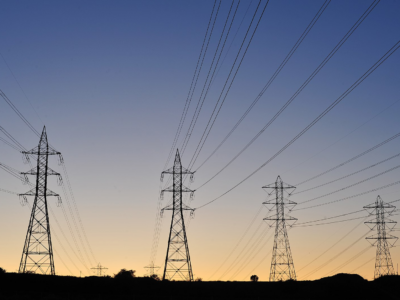Can Residential Electrification Support Energy Affordability?
New UCLA report illustrates potential savings across household types and energy upgrade scenarios, write guest contributors Rachel Sheinberg and Lauren Dunlap.

As the L.A. City Council considers repealing the city’s All-Electric Building Ordinance, reacting to the 2023 decision in California Restaurant Association v. Berkeley, new UCLA research suggests that electric buildings can save LA households hundreds of dollars each year on energy bills.
Over the past decade, Los Angeles city leadership has put forth a suite of ambitious climate mitigation goals. Among these are decarbonization of the city’s electrical grid, buildings, and transportation over the next 25 years. LA’s goal for a more sustainable grid is most ambitious: achieve 100% carbon-free electricity by 2035. Doing so will solidify the city as a leader in climate action and will constitute a crucial step in mitigating planet-warming emissions, improving local air quality, and creating a more resilient energy system. But this transition will also be technically and socially complex.
For residents and energy justice advocates, of paramount importance is how the transition will be financed – and what it will mean for electricity bills. Recent projections from the city’s electric utility, the Los Angeles Department of Water and Power (LADWP), suggest that in the short term, funding new cleaner energy source investments will mean that average residential electricity rates will increase much faster than they have historically (see slide 33 here).
Many worry that these rate increases could not only worsen energy insecurity in LA but also exacerbate barriers to building and vehicle decarbonization – other necessary pieces of the climate mitigation puzzle. Electrification improves indoor air quality, and electric appliances and vehicles tend to be more efficient than their fossil-fuel counterparts. But predicting the ongoing spending impacts of appliance and vehicle electrification is difficult, complicated by the wide array of appliance options, changing consumption patterns, uncertainty about energy prices, and the difficulty of predicting human behavior.
A new report by us and our colleagues at the UCLA Luskin Center for Innovation and California Center for Sustainable Communities addresses this challenge – with promising results. We developed the LA Residential Energy Transition (RESET) tool in collaboration with LADWP’s integrated resources planning team (read the report and check out the tool’s technical handbook to learn how the tool works). We assess the impact of various home electrification pathways and changing energy prices on household spending in neighborhoods across LA. We find that residential electrification will likely benefit most customers, and that, if done intentionally, it can even complement grid decarbonization. Although this research is focused on LA, the methodology could certainly be replicated to support other jurisdictions with equitable decarbonization ambitions.
How will electrification affect LADWP customers’ pocketbooks?
A few findings from our study stand out as particularly important:
- Almost all electrification upgrades can reduce the average household’s energy bills, while staying on gas will likely lead to higher spending.
- Upgrading to high-efficiency appliances saves money across the board, leading to significantly greater savings than similar low-efficiency appliances.
- Whether they live in an apartment, single-family home, or mobile home, LA residents can save on energy bills by electrifying. In fact, every type of household has the potential to cut its bills by at least one-third through high-efficiency, whole-home electrification.
Our study also shares insights on how participation in bill discount programs, electric vehicle ownership, and solar panels affect households’ spending under different electrification scenarios.
CHART: Average household energy bill savings relative to baseline (in dollars saved and percent bill reduction) in 2025

How can electrification be an energy affordability strategy for LADWP?
The work has several policy and program design implications. Many households will require financial support to electrify, and many will also need help navigating the complex web of appliance types, electrical requirements, and tradeoffs. LADWP already provides an array of programs for households, but our findings highlight options to expand or refine these offerings.
First, a free, direct-install home electrification program can be a strong energy affordability strategy. Households can almost always save on their energy bills by switching to electric appliances – an option made feasible by subsidized or covered up-front costs. Replacing even one appliance can save households money: our projections show that a heat pump water heater can save households 10% to 18% on annual energy expenditures, and high-efficiency heat pumps can save 8% to 24%. That being said, these programs must prioritize high-efficiency appliances, as some low-efficiency options may lead to higher bills. And ideally, to be a true equity strategy, such a program would target low-income renters and homeowners.
Second, our study also indicates significant savings for participants in LADWP’s Comprehensive Affordable Multifamily Retrofits (CAMR) program. The program subsidizes holistic electrification and building enclosure upgrades that can significantly reduce households’ bills, based on our results. If high-efficiency appliances are used, our projections show that CAMR could save households in larger multifamily buildings an average of ~$300 per year — cutting bills by about one third. Moreover, as energy prices rise in the future, the study suggests that these upgrades can keep households’ bills closer to current levels compared to staying on gas. These findings provide a strong argument that CAMR is an effective energy affordability strategy for the utility to invest in and expand.
Third, where it is not possible to cover upgrade costs entirely, LADWP could consider creating an on-bill financing program to provide zero-interest loans for customers who would like to electrify without taking on the high upfront costs of upgrades. The customer would receive a loan from LADWP to pay for upgrades, and then a fixed charge would be added to their bill to repay the loan over time. Our findings suggest that the savings on energy bills could cover a large portion of this charge, particularly for single-family detached households (although further analysis would be needed to understand exactly how the numbers would pencil out).
Implementing any type of targeted programs – and setting electricity rates in general – is tricky business in Los Angeles. LADWP, the nation’s largest municipally-owned utility, is subject to California’s Proposition 26, which restricts municipalities’ ability to levy new taxes or fees without voter approval. As the most recent addition to California’s ‘Tax Revolt Family Tree’, Proposition 26 has been a major barrier in updating rates to better achieve affordability and sustainability. Thus, as the city goes carbon-free, it is in dire need of creative affordability solutions.
While there are many barriers to electrifying homes in LA, our findings show that impacts on ongoing energy spending compared to the status quo are almost certainly not one of them. LADWP, policymakers, advocates, and residents alike can be encouraged by these findings, and take advantage of the opportunity to both improve affordability outcomes for residents and move Los Angeles towards its decarbonization goals.
Read the full report here.
Rachel Sheinberg is a PhD candidate with the California Center for Sustainable Communities and Lauren Dunlap is a project manager for energy equity research at the UCLA Luskin Center for Innovation.







Reader Comments